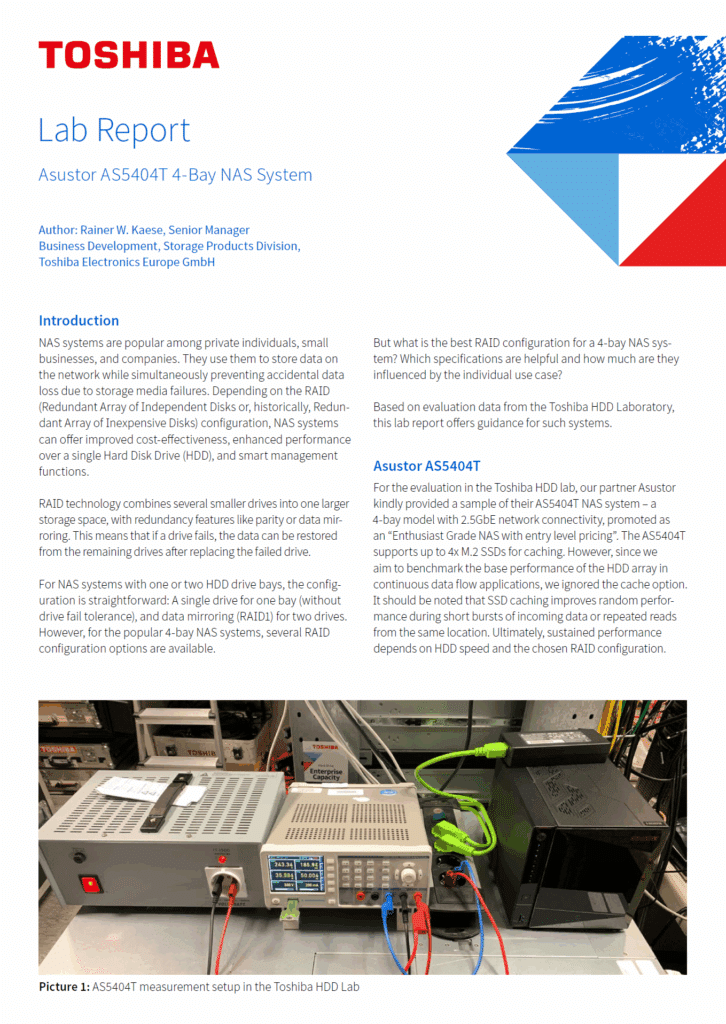Lab Report for Asustor AS5404T 4-Bay NAS System
Introduction
NAS systems are popular among private individuals, small businesses, and companies. They use them to store data on the network while simultaneously preventing accidental data loss due to storage media failures. Depending on the RAID (Redundant Array of Independent Disks or, historically, Redundant Array of Inexpensive Disks) configuration, NAS systems can offer improved cost-effectiveness, enhanced performance over a single Hard Disk Drive (HDD), and smart management functions.
RAID technology combines several smaller drives into one larger storage space, with redundancy features like parity or data mirroring. This means that if a drive fails, the data can be restored from the remaining drives after replacing the failed drive.
For NAS systems with one or two HDD drive bays, the configuration is straightforward: A single drive for one bay (without drive fail tolerance), and data mirroring (RAID1) for two drives. However, for the popular 4-bay NAS systems, several RAID configuration options are available.
But what is the best RAID configuration for a 4-bay NAS system? Which specifications are helpful and how much are they influenced by the individual use case?
Based on evaluation data from the Toshiba HDD Laboratory, this lab report offers guidance for such systems.
Click here to download the full lab report.
Author: Rainer W. Kaese, Senior Manager, HDD Business Development at Toshiba Electronics Europe GmbH


